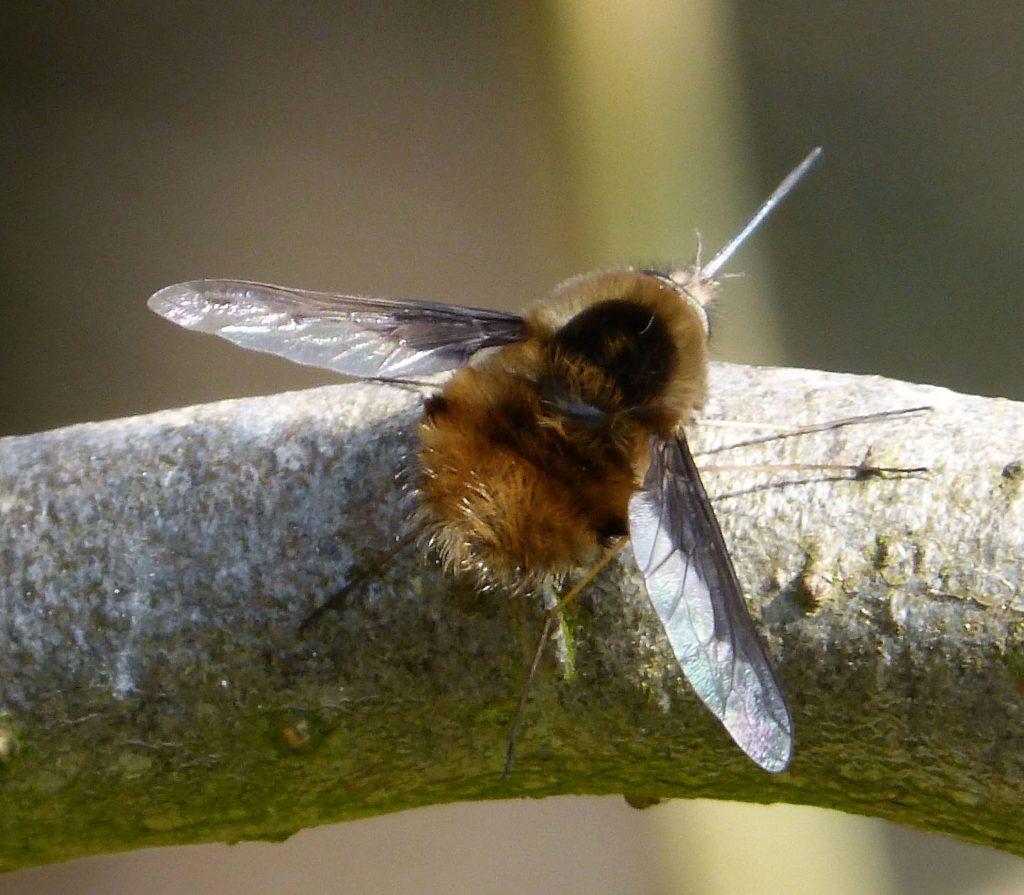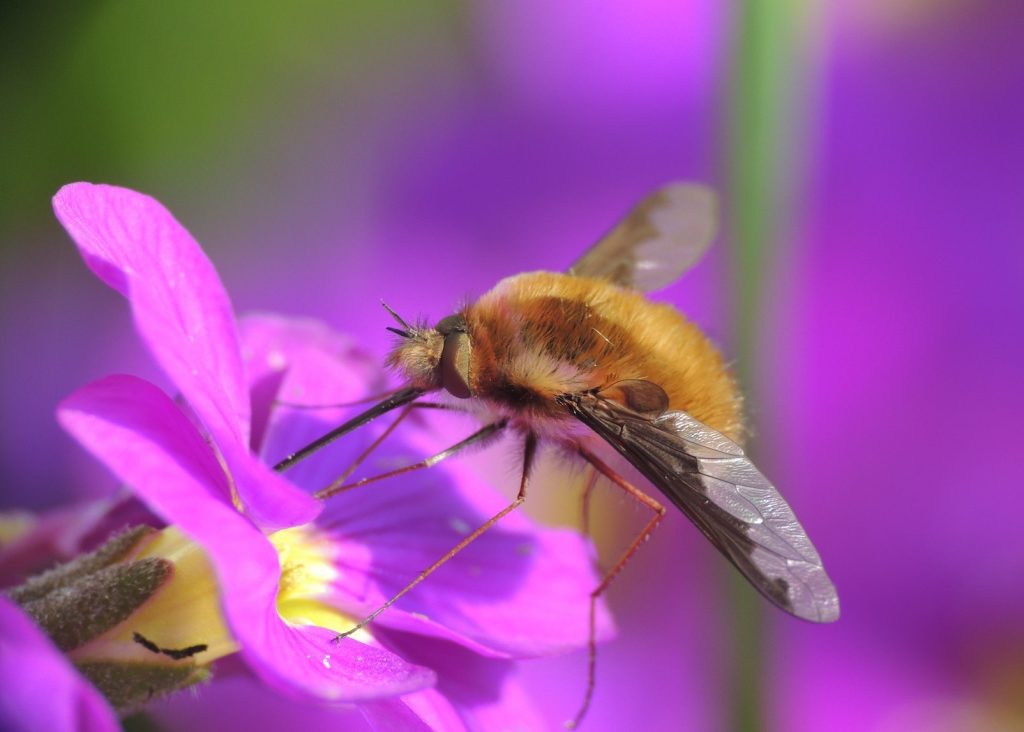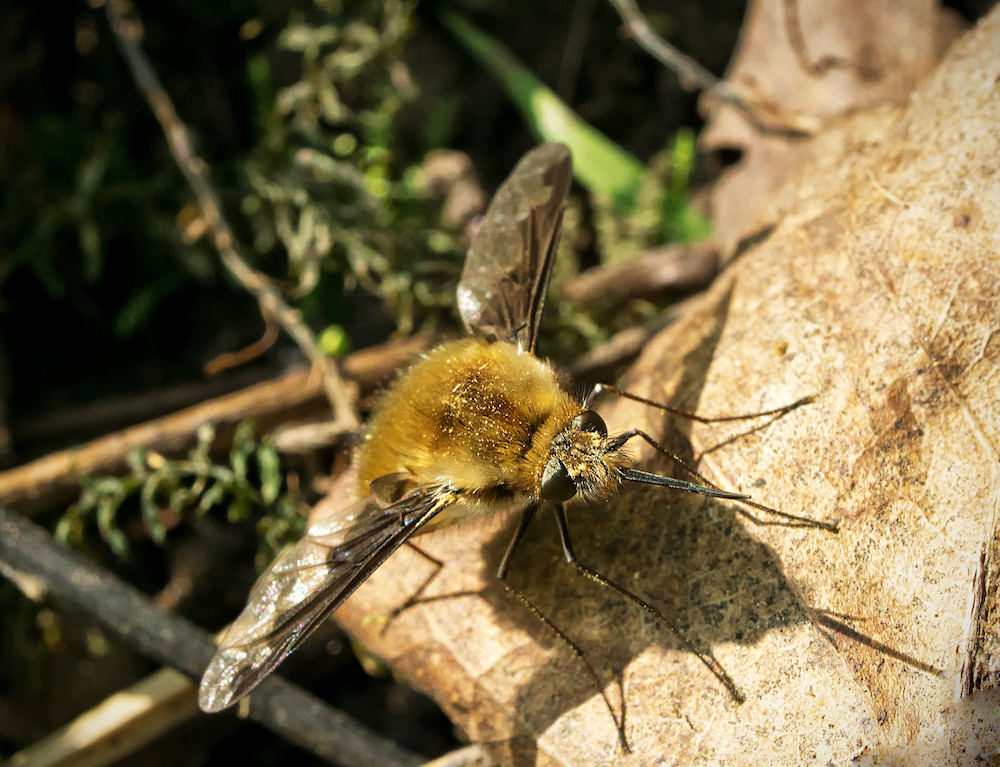
Bee Flies: Masters of Disguise
What do you get when you cross a bee, a hummingbird, a mosquito, a narwhal and a fly?
The answer: a bee fly. Yes, it’s a real insect, living right under our noses. But you may not know it when you see it…
Bombylius major
The fuzzy-looking creature below is a dark-edged bee fly (Bombylius major). With its thorax and abdomen covered in yellow-brown “fur”, and its bulky silhouette, it’s very often mistaken for a bumblebee.
Bee flies are one of many insects that rely on mimicry for protection. Imitating the warning systems of another species is a great way to scare off potential predators without needing to invest the energy into actually being harmful. This phenomenon is known as Batesian mimicry. Listen to a bee-fly in flight and you’ll also hear how it buzzes just like a bee to enhance the effect.
Four species of Bombyliuslive here in the UK, but the dark-edged bee fly (AKA common or greater bee fly) is the most common and widespread, with records dispersed across the whole country.B. majoris a member of the Bombyliidaefamily, which also includes the heath bee fly (B. minor), the Western bee fly (B. canescens) and the dotted bee fly (B. discolor). The dotted bee fly is a Warwickshire Local Biodiversity Action Plan species we have recently recorded in the Forest and the second most likely species you will see

How to tell the difference between a bee and a bee fly
Take a second look at the next tiny, furry, flying creature you see. While bees and bee-flies are of a similar size, the bee fly will have more prominent eyes. The dark-edged bee fly also has a single large pair of patterned “delta wings”, which form a triangle at rest, and sport a distinctive dark stripe across the leading edge of each wing. The dotted bee fly looks similar but lacks the dark stripe and instead has dots across its wings.
Another giveaway is that bee flies have long, skinny legs compared to bumblebees. They have no “pollen baskets” to store pollen, but can still get covered in the stuff, so can play an important role in pollination.
The most distinctive feature of a bee fly is its long proboscis, or tongue, like those you see on butterflies and hummingbirds. This dark black spear at the front of its head looks pretty fearsome, but is only used for drinking nectar, often from flowers with long calyces (tubes) such as primroses. Like the hummingbird, you’ll often spot the bee fly hovering around flowers, dipping its tongue into the flower while in flight. Unlike the hummingbird, however, the bee fly’s proboscis doesn’t curl away when not in use. Its permanently spiky appendage has led to another of its common names: the beewhal.
Fortunately for us, the bee fly isn’t able to sting, and it doesn’t spread disease, so is harmless to people. But if you’re a bee larva, you should definitely keep your distance. Here’s why.
Parasitic larvae
Aside from its deceptive appearance, the bee fly is best known for the strange behaviour of its females. On a sunny day in spring, you may catch the sight of the female bee-fly performing an odd-looking manoeuvre, not unlike a twerk, in front of the nest holes of solitary bees and wasps. She covers her eggs in sand and then, with a thrust of her abdomen, flicks them towards the entrances of the nest holes. The eggs hatch into larvae, crawl further into the hole, and wait for one of their host’s eggs to hatch. They then attach to the bee’s larva and begin to suck out its body fluids. So not only do bee flies imitate their namesakes, they snack on their larvae, too.

Where to see bee flies
Bee flies are commonly found in gardens, woodland glades and edges, farmland, and hedgerows, where the mining bees they parasitise on are present. With all these habitats in the Heart of England Forest, there’s plenty of opportunity to spot them, and they will hopefully become more common as we create new wildflower corridors and rides through the Forest.
Bee flies are most active during the months of April and May, beginning to emerge as the weather warms in early spring. So, next time you see a “bee” hovering close to sandy or rocky bare ground, perusing spring flowers, or basking in a sunny spot, take a closer look – it might be a bee fly in disguise!
A Forest for wildlife
We’re working hard to create a Forest where wildlife thrives, and in spring the woodland wildlife activity becomes more frenzied as many residents wake up from their winter slumber. Find out more about wildlife in the Forest.



